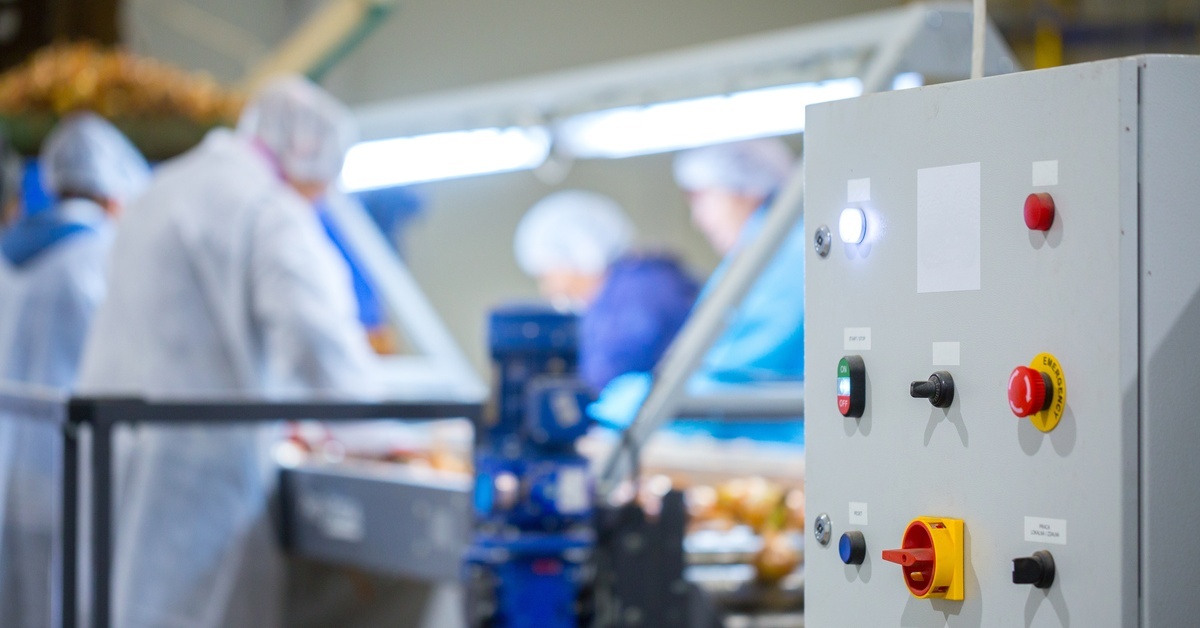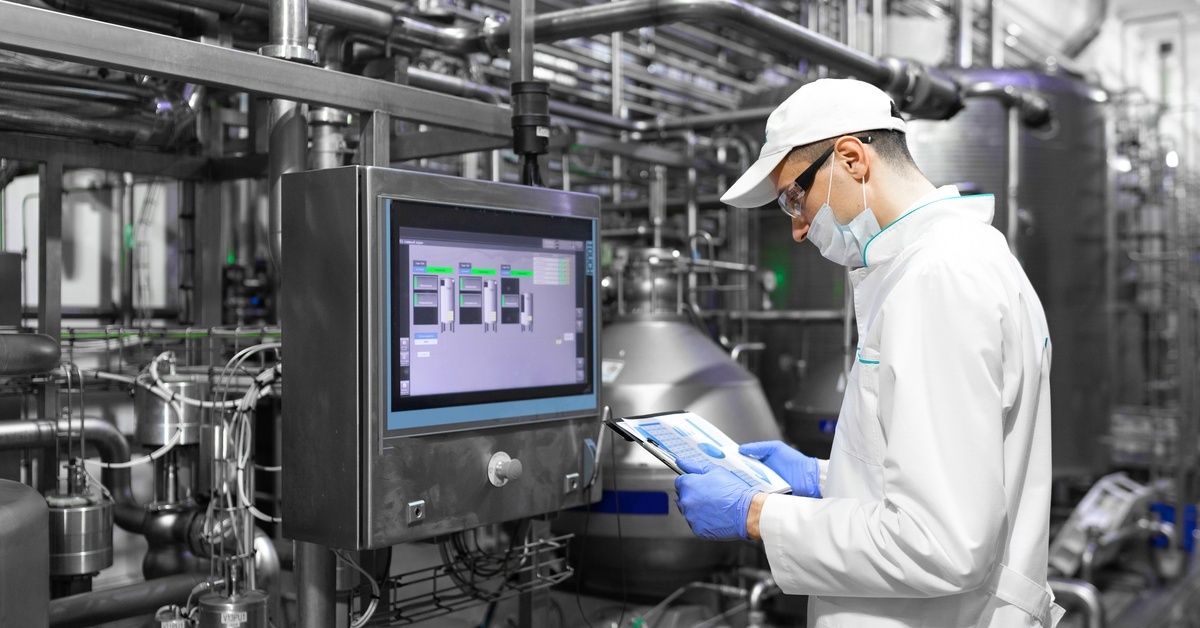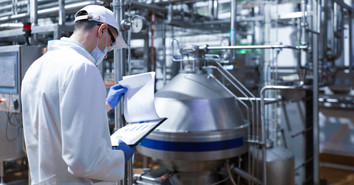In industries where product purity is critical, such as food processing, pharmaceuticals, and manufacturing, choosing suitable machinery lubricants is essential for operational integrity. While standard industrial lubricants are effective for machinery, they pose a significant contamination risk if they come into contact with products. Therefore, understanding food-grade lubricants and preventing contamination risks is vital for maintaining product safety and meeting regulatory standards.
Using lubricants formulated explicitly for these environments mitigates the risk of introducing harmful substances into the production chain, safeguarding both consumer health and brand reputation.
Understanding Food Grade Lubricant Classifications
The NSF International, continuing the prior work of the U.S. Department of Agriculture (USDA), establishes the standards for lubricants used in and around food processing areas. These classifications categorize lubricants based on the likelihood of contact with food products.
H1 Lubricants: Incidental Food Contact
H1 lubricants are used on machinery where there's a risk of incidental food contact. These lubricants are formulated with ingredients that are safe for human consumption within certain limits. While their primary function is still to reduce friction, wear, heat, and corrosion in machinery, their composition is strictly regulated to prevent health risks in case of minor contact.
However, their composition is strictly regulated to prevent health hazards in the event of minor contact. Operations in food, beverage, and pharmaceutical manufacturing depend on H1 lubricants for equipment like mixers, conveyors, and packaging machines.
H2 Lubricants: No Food Contact
H2 lubricants are for use on equipment and machine parts in locations where there is no possibility of the lubricant or lubricated surface contacting food. These products do not have the same restrictive list of approved ingredients as H1 lubricants. Consequently, their formulation can include a broader range of substances to meet specific performance demands.
H2 lubricants are common in areas of a plant physically separate from food processing, such as maintenance shops or machinery operating outside the production zone. Careful management prevents their accidental use in food-contact zones.
H3 Lubricants: Direct Food Contact
H3 lubricants, also referred to as soluble or edible oils, are utilized for cleaning and rust prevention on equipment like hooks and trolleys. These lubricants are made from safe edible oils such as corn or soybean oil, or other substances recognized as safe (GRAS) by the FDA. They are suitable for use in situations where they come into direct and ongoing contact with food, such as acting as a release agent on grills or baking pans to prevent sticking.

Strategies for Contamination Prevention
Implementing a robust lubrication management program is foundational to contamination control. This involves more than just selecting the right food-grade oil; it requires systematic procedures for handling, storing, and applying lubricants correctly. A comprehensive strategy addresses potential points of failure and establishes clear protocols for all personnel.
Proper Lubricant Storage and Handling
Effective contamination control starts with how lubricants are stored and managed before they even reach the machinery.
- Segregation: Store food-grade lubricants separately from non-food-grade lubricants. Designate specific, clearly labeled areas for H1, H2, and H3 products to prevent cross-contamination. Color-coding storage racks, containers, and application equipment can provide an immediate visual cue, reducing the likelihood of human error.
- Sealed Containers: Keep lubricants in their original, sealed containers until they are ready for use. Once opened, containers should be resealed tightly to prevent airborne dust, moisture, and other environmental contaminants from entering. Transferring lubricants to smaller, properly labeled secondary containers for daily use can minimize the risk of contaminating the main supply.
- Cleanliness: Maintain a clean and organized storage area. Regular housekeeping prevents the accumulation of dirt and grime that could inadvertently contaminate lubricants during handling.
Correct Application and Monitoring
The application process itself offers multiple opportunities for contamination if not managed carefully.
- Dedicated Equipment: Use dedicated and clearly labeled grease guns, pumps, and other application tools for each type of lubricant. Sharing equipment between food-grade and non-food-grade products is a direct path to cross-contamination.
- Precise Application: Train maintenance personnel to apply the correct amount of lubricant. Over-lubrication can lead to dripping and leakage, increasing the chance of incidental contact with food products. Under-lubrication, conversely, can cause equipment failure, which may also introduce contaminants into the production line.
- Routine Inspection: Implement a schedule for regular equipment inspections. Check for leaks, worn seals, and other signs of potential lubricant failure. Oil analysis programs can monitor the condition of lubricant and machinery, helping predict and prevent failures before they lead to contamination.
The Role of Synthetic vs. Mineral-Based Lubricants
When selecting a food grade lubricant, a choice often arises between synthetic and mineral-based formulations. Both types can be certified as H1, but they offer different performance characteristics. Mineral-Based Lubricants: Derived from petroleum, these are often a cost-effective choice for general applications. They provide reliable lubrication under standard operating conditions.
Synthetic lubricants are made using chemical processes to enhance performance. They usually provide a broader temperature range, improved thermal and oxidative stability, and last longer. In high-temperature settings such as ovens or low-temperature areas like freezers, synthetic lubricants retain their properties better, decreasing the need for frequent re-lubrication and lowering equipment failure risks. This extended performance helps maintain the integrity of food-grade lubricants and reduces contamination risks.
Implementing a HACCP-Compliant Lubrication Program
A Hazard Analysis and Critical Control Points (HACCP) plan is a systematic approach to food safety that identifies potential hazards and implements measures to control them. Integrating lubrication into your HACCP program formalizes its role in your overall safety strategy.
- Identify Critical Control Points (CCPs): Review all machinery and identify points where lubricant contamination could pose a food safety risk. These are your CCPs.
- Establish Critical Limits: For each CCP, define the correct lubricant (e.g., H1 certified) and application procedure.
- Implement Monitoring Procedures: Create a logbook system to track lubricant application, machinery inspections, and any corrective actions taken.
- Develop Corrective Actions: Predetermine the steps to take if a deviation occurs, such as a lubricant leak. This might include halting production, cleaning the affected area, and inspecting the product.
- Establish Verification Procedures: Periodically review your lubrication management plan to confirm its effectiveness. This can involve audits of storage areas, a review of monitoring logs, and oil analysis.
Training and Documentation
Human error remains a common cause of contamination. Comprehensive training for all maintenance, production, and quality control staff is non-negotiable. Personnel must understand the different types of food-grade lubricants, their specific applications, and the strict protocols for storage, handling, and application.
Documentation provides the framework for consistency and accountability. Maintain detailed records of:
- Lubricant purchasing (including supplier certificates of analysis).
- Lubrication schedules for all equipment.
- Training sessions and attendee lists.
- Corrective actions taken in response to incidents.

A Proactive Approach to Lubrication Solutions
A well-managed lubrication program using the proper food-grade lubricants is a cornerstone of food safety and operational excellence. By understanding the classifications, implementing strict handling and application protocols, and integrating lubrication into a broader safety framework like HACCP, organizations can effectively mitigate contamination risks.
For those seeking reliable lubrication solutions, a high-quality, food-safe grease lubricant provides a dependable foundation for any contamination prevention strategy. This proactive stance protects consumers, complies with regulations, and preserves your brand's integrity.

